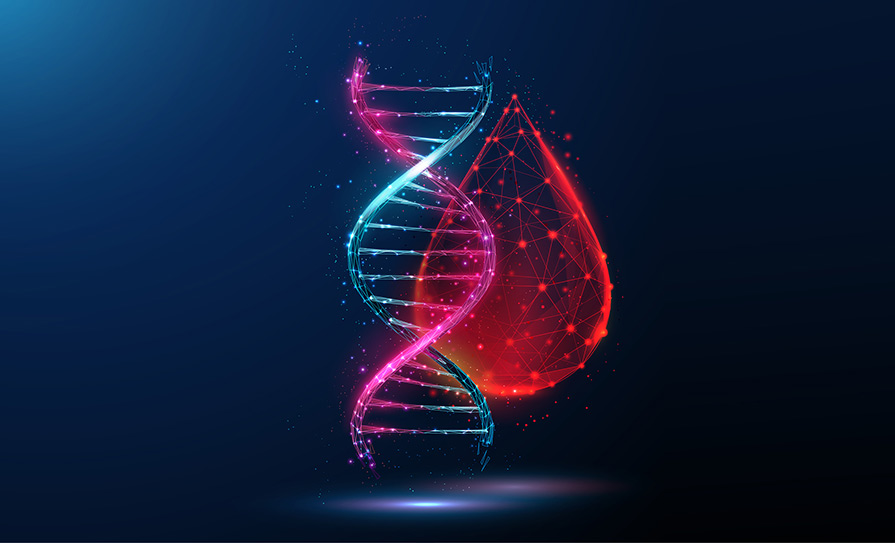Dr Mary Kearney discusses the latest treatment approaches to acute migraine attacks
Migraine classification was initiated by the International Headache Society in the early 1990s. It has been reviewed and defined more accurately since that time and in 2018, the third edition of International Headache Disorders was published. It clearly defines migraine with and without aura, and it further distinguishes between episodic and chronic migraine.
Episodic migraine is when attacks occur on less than 15 days per month. Headache experts generally refer to low (one-to-four days/month), moderate (five-to-nine days/month), and high (10-to-14 days/month) frequency episodic migraine. When a patient presents to a GP with recurrent headaches, they should be advised to keep a detailed daily diary. This should include details about the severity of the headaches, associated features, acute treatments used, effect on lifestyle and possible triggers. This provides very useful clinical information and can help confirm the diagnosis. In addition, the diary often demonstrates the benefits of acute and/or other therapies.
Management of acute episodic migraine attacks by the patient
Patients should take acute treatments as early as possible during an attack, preferably before the headache is well established.
However, it may be difficult for patients to predict whether they will have a mild, moderate or severe attack. It therefore follows that it may be difficult for healthcare professionals to be very specific about when patients should self-medicate. Many patients will learn from their own experiences when to and when not to treat an attack. Detailed diaries and personal awareness are very important in this regard. Acute migraine treatments, including painkillers/analgesia, non-steroidal anti-inflammatories (NSAIDs) and triptans should be used no more than four-to-six days per month in order to avoid medication overuse in the context of migraine. The number of days per month that acute medication is taken determines if medication overuse is present. In addition, it is generally advised that patients should avoid codeine, tramadol or other opiate derivatives.
The acute treatment of migraine changed significantly in the early 1990s with the advent of the triptans. Many patients report that triptans are the single most useful drug for the treatment of acute attacks. Combination treatment (paracetamol, an NSAID and a triptan) may provide further benefit for some patients.
The current recommendations for treating acute migraine attacks are to consider a combination of:
Paracetamol.
NSAIDs.
Triptans are recommended early in the attack. If migraine recurs in patients who respond, repeat the dose at a minimum of a two-hour interval, being careful not to exceed the maximum daily dose and frequency.
Individual patients may respond effectively to simple analgesia combinations, such as paracetamol and ibuprofen taken together. Alternatively, some patients may need a combination of medications from all three categories, for example, paracetamol, naproxen and frovatriptan. These medications can all be taken at the same time. Anti-emetics (such as domperidone or prochlorperazine, ondansetron) can often improve the response to acute treatment by mechanisms that are not clearly understood. It is believed that these latter agents may be prokinetic.
If the initial combination of acute medication does not work after the timely treatment of two or three migraine attacks, it is important to change the medication combination. Pain freedom at two hours is considered to be a good response to treatment and is the standard measure used for efficacy in clinical trials. For example, if paracetamol, naproxen and sumatriptan are not effective for repeated attacks, one could try paracetamol, ibuprofen, and frovatriptan. GPs tend to have considerable experience in the use of paracetamol and NSAIDs. However, they are less accustomed to using different triptans.
Commonly-prescribed triptans
Sumatriptan, zolmitriptan and almotriptan have a quicker time of onset as compared to frovatriptan and naratriptan. However, frovatriptan and naratriptan have longer half-lives, with longer clinical effect. Sumatriptan is currently the most versatile of the triptans, with an oral, nasal and subcutaneous (SC) formulation.
Sumatriptan in SC injection form is the most rapidly absorbed, but has the most severe side-effects. There may be a transient increase in headache (‘head rush’) for 10-to-20 minutes after the use of the SC formulation. Nevertheless, it is particularly useful in patients who have significant vomiting early in an attack. These patients also benefit from a rapid onset to peak concentration of triptan. When prescribing a triptan in any formulation, if there is any concern about the person’s cardiac status, a stress ECG and echocardiogram should be performed to outrule ischaemic heart disease or a cardiomyopathy.
Sumatriptan SC is not licenced in Ireland. It is only available on a ‘named patient basis’, so this may lead to a delay in getting it from the pharmacy. The traditional nasal sumatriptan spray is relatively poorly absorbed nasally and also may have some gastrointestinal absorption. It often gives a significant bitter aftertaste in the person’s mouth, which may make any pre-existing nausea worse. However, many patients find this sumatriptan preparation useful.
Zolmitriptan also has a nasal formulation and it is well absorbed through the nasopharynx (40 per cent), with the remainder being absorbed through the gastrointestinal tract. Zolmitriptan is also available as a Rapimelt tablet, which dissolves quickly under the tongue.
In practice, the choice of acute therapy for episodic migraine will depend on the:
Efficacy of previously-tried therapies.
Severity, impact and disability associated with a typical attack.
Patient’s pre-existing history.
Previous concerns about the use of triptans in patients with complex aura, such as brainstem and hemiplegic migraine, have not been substantiated. Triptans should be used with caution in those with established moderate-to-severe coronary heart disease (see section 13, Migraine in Sport for further details).
Management in general practice and hospital emergency departments
It is not uncommon for patients to attend their GP or the emergency department when:
The headache is severe.
The attack is associated with persistent vomiting.
There are new associated neurological symptoms.
The patient is unsure as to the cause of the headache.
Initial assessment to separate the very many non-serious headaches, which may be very severe, from the fewer but life-threatening headaches. Apart from the obvious (ie, worsening headache with fever or impaired level of consciousness) the following groups of symptoms and signs if associated with a headache can be suggestive of ‘a’ headache of serious significance.
The mnemonic ‘SNOOP’ (above) is in common usage as a screening tool when a doctor assesses a patient with a headache. It is important to ask specifically about the above symptoms, as patients often do not volunteer them. They help to assess the patient quickly. A full clinical examination and a screening neurological assessment is always advised, but in particular one should look for:
Tenderness of temporal artery — suggestive of giant cell arteritis.
Painful red eye in conjunction with a headache, misty vision or halos would be suggestive of acute glaucoma.
Papilledema in optic fundus, suggesting raised intracranial pressure.
Having outruled ‘red flags’, one should then take a more detailed history of the characteristics of the headache. The frequency, severity and associated disability are particularly relevant at this stage. One should ask and document all of the medications the patient is taking for the headache, the timing of acute medication and whether or not it has been helpful. Treatment failure for acute attacks may be caused by inadequate dosing or not using appropriate combinations.
For patients with regular, rapid and persistent vomiting, consider non-oral routes of administration of acute medications. For example:
Rectal diclofenac and paracetamol.
Nasal or subcutaneous sumatriptan (can be very useful, as they can be administered at home).
Sometimes intravenous (IV) fluids, IV paracetamol, IV/intramuscular (IM) antiemetics, and/or IV/IM injections of NSAIDs are also required.
Morphine and opiate-based preparations should be avoided due to the risk of medication overuse, dependency, associated comorbidities and side-effects. Regular use of steroids should be avoided.
Routine follow-up with the GP should be encouraged after an acute episode where the patient attended hospital casualty or the emergency GP out-of-hours service. Patients with more regular headache and migraine symptoms should keep a detailed headache diary.
In patients with an average of more than eight-to-10 days per month of headache/migraines, patients should be advised that preventative or prophylactic treatment is indicated. GPs are often well placed to initiate such treatment, particularly if the patient attends with a headache diary. The diary should include, at the least, symptoms, duration, severity, medication taken and its effect for each attack.
Nerve blocks
Greater occipital nerve (GON) blocks can be used as an acute treatment in migraine, injecting a mixture of steroid (depomedrone) and local anaesthetic (lidocaine). Currently, in Ireland, patients can be treated with them in some emergency departments. It may also be done in general practice, but to date, no research on its usage in general practice has been undertaken. This therapeutic procedure gives short-term relief of two-to-three months. Rare side-effects (less than 1 per cent) include lipoatrophy at the injection site, with loss of hair growth (see Image 1).
The GON can be found superficially, approximately 2.5-to-5cm inferolateral to the occipital prominence. The patient is positioned sitting with the head either vertical or slightly flexed. The nerve is located and felt along the superior nuchal line. Depomedrone 40mg/ml is used. The 2ml amp is diluted with 3ml sterile water and injected into the tender GON. GON blocks may improve the headaches and associated symptoms in the short-to-medium term. They also form part of a preventative treatment strategy.













Leave a Reply
You must be logged in to post a comment.